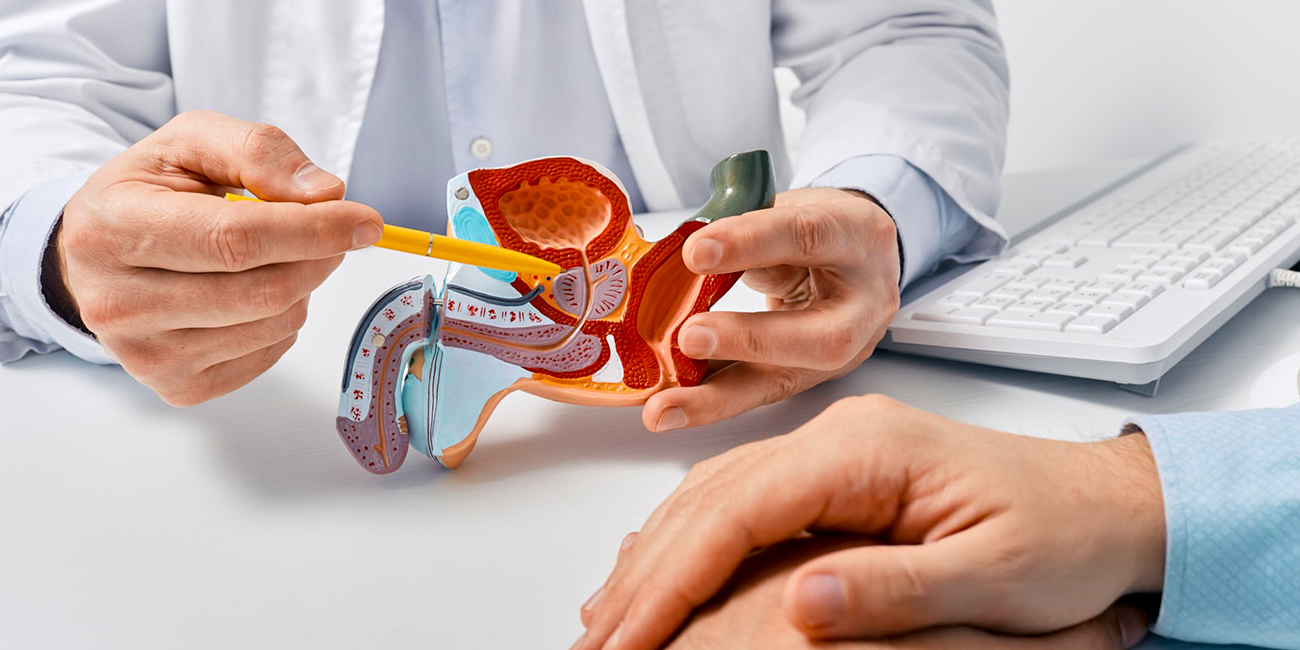
Book a Consultation
Thank you!
Your form has been sent successfully.



December 06, 2022
Prostate cancer is the second most common cancer among men in the United States. However, it is a lesser-known fact that exercise can help reduce the odds of prostate cancer and even help those already suffering from it.
Let us first understand how exercise helps a person with prostate cancer. Exercise lowers the risk of diabetes and obesity while enhancing bone density and heart health. It can also lower blood sugar levels, reducing insulin levels and inflammatory markers. This is significant because inflammation, insulin levels, and the risk of prostate cancer are related.
Another key advantage is that exercise helps reduce the side effects of prostate cancer treatments like androgen restriction therapy (ADT). Loss of muscle, rise in body fat, and osteoporosis are all potential side effects of ADT. Exercise can also lessen tension, worry, and depression that men with prostate cancer frequently experience.
Key benefits of exercise during and after prostate cancer treatment:
Reduces anxiety and fatigue
Boosts confidence
Increases optimism levels
Improves heart health
Helps maintain healthy weight
Enhances muscular endurance and strength
Read more: Cancer Prevention Methods at A Glance
It is important for any patient to be cautious and consult their provider before beginning an exercise program. Specific side effects from prostate cancer and its therapies may require a customized fitness regimen. Stop exercising and speak with a doctor if the patient experiences any of the side effects listed below.
Fatigue: Intense exercise can be more difficult when one is physically weak after treatment. Keep an eye on the energy levels and adjust the workouts as necessary.
Osteoporosis: Ask the doctor what weight-bearing exercises may be performed by the patient to safely strengthen the bones if diagnosed with osteoporosis.
Bone tumors: An increased risk of fracture results from the spread of cancer cells, or metastasis, to the bone. Practice exercises that lower the risk of falling.
Heart problems: Start the fitness routine under physician supervision if the patient has weak heart muscles or an irregular heartbeat.
Read more: 9 Thoughtful Gifts for Cancer Patients

Aerobic exercises strengthen your heart and lungs. Walking is an ideal aerobic exercise for prostate cancer patients. Because often prostate cancer therapy has side effects, walking at a comfortable pace for 90 minutes a week can help reduce fatigue, depression, and body weight.
Men who are receiving treatment for prostate cancer should pay close attention to maintaining strong pelvic floors to minimize side effects and enhance sexual and urine function. Here’s a guide on how to perform Kegel exercises that can help address the issue.
Stretching or range-of-motion (ROM) activities, sometimes referred to as flexibility exercises, lengthen muscles and tendons. They enhance or preserve joints' and muscles' flexibility. As we age, our joints and muscles become less flexible naturally, but cancer therapies can also reduce flexibility. Regular stretching can prevent any loss of flexibility and aid in overcoming stiffness. Here are a few stretching exercises for cancer patients:
Exercises that improve balance help minimize some of the effects of muscular imbalances and body asymmetry following surgery. Chemotherapy frequently has adverse effects like neuropathy, which can cause the feet to become numb. It is challenging to keep your equilibrium if you can't feel your feet. Balance training should be a regular component of the fitness regimen to make up for lost strength. Standing on one foot, tightrope, calf or heel raises, and grapevines are some of the key balance exercises.
Muscle loss is a common occurrence in patients who are inactive during cancer treatment.
Strength training will help reduce body fat while increasing muscle mass and bone density. The exercise can be carried out with weights, bands, machines, or one's body weight. It can also help fight osteoporosis, and bone weakness that some cancer treatments can cause.
To combat the side effects of prostate cancer treatment and to ensure a quick recovery, consistent exercise is key. However, pay attention to the body. Avoid going beyond limits and reduce exercise if the patient finds it difficult to complete a session.
Encourage patients to perform exercises that they enjoy, rather than strenuously working on ones that make them more tired. Help them listen to the needs of their body and workout accordingly.



November 13, 2025
Food choices feel high-stakes during cancer care, and because of that,...
KNOW MORE

November 13, 2025
Ablation treats prostate cancer using energy such as heat, cold, elect...
KNOW MORE

November 13, 2025
Discovering a fast-growing bump on your skin can cause immediate worry...
KNOW MORE

November 13, 2025
Triple negative breast cancer (TNBC) is one of several kinds of breast...
KNOW MORE

June 03, 2024
The last decade has witnessed a sea change in oncologic treatments. Re...
KNOW MORE

April 17, 2024
Oncology is one of the most exciting fields in medicine today. Disease...
KNOW MORE
